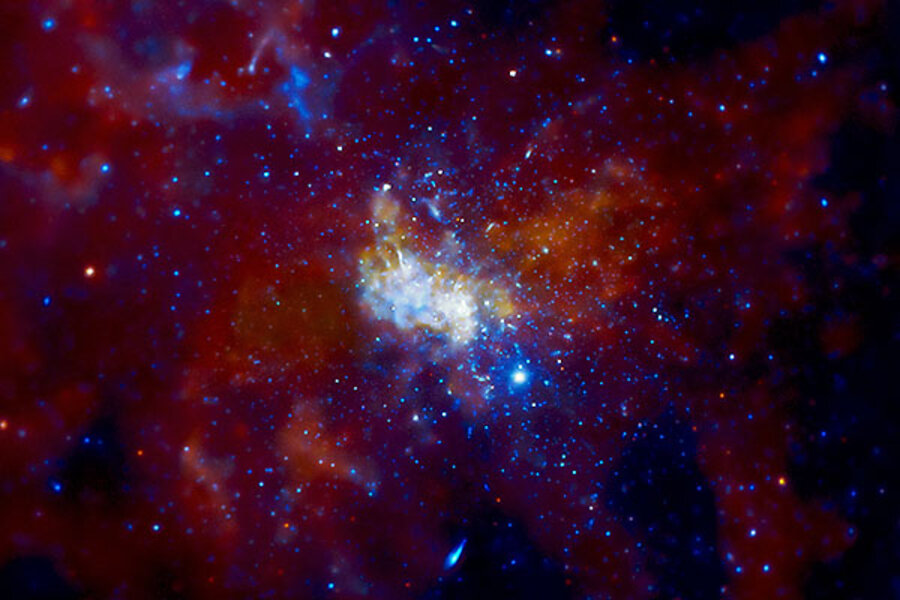Milky Way enigma: Why galaxy's central black hole is silent
Loading...
One of the Milky Way's longstanding puzzles centers on the super-massive black hole at its core, in the constellation Sagittarius: Why is that monstrous black hole, known as Sag A*, so much less energetic that its counterparts in other galaxies?
The behemoth, with some 2.6 million times the sun's mass, is a cosmic dud at the moment. Something is starving it, depriving it of material that otherwise would plummet into it.
Roman Shcherbakov, a researcher at the Harvard-Smithsonian Center for Astrophysics, says he's figured out what that "something" is likely to be: heat.
As material from surrounding stars approaches the black hole and gets compressed by the monster's gravity, it heats up. Some of that heat gets conducted away from the black hole, setting up a source of pressure that sweeps material away from the voracious object.
In other words, heating around the black hole's event horizon – essentially the boundary within which material falls into oblivion – is in effect starving the black hole.
The challenges of studying black holes
In presenting his results during the American Astronomical Society's winter meeting in Washington this week, Dr. Shcherbakov says that building the process of heat conduction into models of how black holes work began a only a couple of years ago.
The processes are so complex that, until recently, "it's been hard to include them in the models," he adds.
Black holes are objects so massive that their gravity is strong enough to prevent light from escaping. Yet scientists have developed ways of detecting them through their effects on the material around them.
In galaxies with active black holes at their cores, strong magnetic fields in the black hole's neighborhood accelerate electrons to speeds up to 99.9 percent of the speed of light and collect them into jets that erupt from the poles of a central black hole. These are visible in a range of wavelengths, from radio eaves to x-rays.
In addition, the material falling into a black hole heats to the point where it emits x-rays.
Testing the theory
Shcherbakov and colleague Frederick Baganoff, with the Massachusetts Institute of Technology, used data from NASA's Chandra X-Ray Observatory as a reality check on their computer simulations testing the heat-conduction idea.
Typically, Shcherbakov explains, roughly 1 percent of the material that surrounding stars exhale as stellar wind reaches the event horizon of a black hole like Sag A*. If Sag A* was receiving that banquet, it should be 100 times brighter in x-rays than it is.
Using a long exposure from Chandra, the duo was able to observe the black hole's activity out to a radius of about 4 light-years. They found that only 0.01 percent of the material one would expect to see ever reaches the black hole's event horizon.
The observations, Shcherbakov says, "are in good agreement" with the model results that take heat conduction into account.
Sag A* hasn't always been this mellow. Last year, for instance, a team of Japanese astrophysicists reported evidence that x-rays from superheated material falling into Sag A* briefly flared some 300 years ago. The x-ray signature at the time would have been a million times brighter than it is today.
Heat conduction is not the only explanation scientists have offered up to explain Sag A*'s current somnolence. Another idea, for instance, involves stellar explosions called supernovae. So many stars near the center of the galaxy are popping off this way that the outrush of material from the explosions in effect is pushing material away from the black hole.
Researchers now face the task of figuring out the relative roles such mechanisms play in keeping Sag A* on its version of a Weight Watchers program.
-----
Follow us on Twitter.





